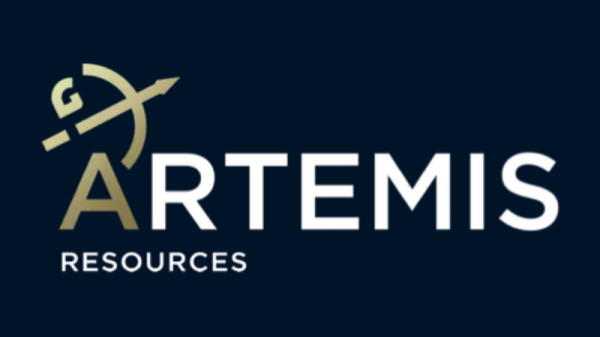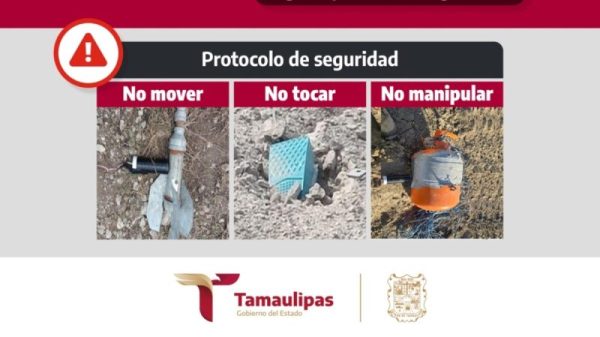The number of private 5G connections is forecasted to grow at a CAGR of 65.4% until 2030 and comprise 13% of the total 5G IoT connections globally by then, according to IoT Analytics’ latest “5G IoT & Private 5G Market Report 2024–2030.”
Private 5G connections: Despite its smaller share compared to public 5G, private 5G is projected to grow from 1.28 million connections in 2023 to nearly 107 million by 2030. This growth is driven by its distinct advantages in security and control, making it attractive to sectors like healthcare and non-industrial facilities.
Key use cases and regional growth: The report identifies 5 key private 5G use cases, including remote control of assets, facility connectivity, logistics automation, camera-based surveillance, and AR-based inspections. China and Europe are highlighted as key regions for private 5G growth.
Key insights:
There were 1.28 million private 5G IoT connections globally in 2023—5% of the 25.6 million 5G IoT connections—according to the 367-page 5G IoT & Private 5G Market Report 2024–2030.
The report forecasts private 5G connections to grow at a CAGR of 65.4% until 2030 and comprise 13% of the total 5G IoT connections globally by then.
China and Europe are regional growth areas for private 5G through 2030, with non-industrial facilities and campuses, such as ports and office buildings, fueling its growth.
Among 15 use cases for 5G IoT in general identified in the report, IoT Analytics identified the top 5 private 5G use cases: 1) remote control of assets, 2) facility or campus connectivity and coverage, 3) logistics automation using AGVs and AMRs, 4) camera-based facility surveillance, and 5) facility or asset inspection using AR glasses.
Select quotes:
Satyajit Sinha, Principal Analyst at IoT Analytics, comments that “China’s strategic approach to 5G, encompassing both industrial and non-industrial applications, has propelled its global leadership. A strong hardware ecosystem and government backing have accelerated deployment. Meanwhile, the US and Europe face hurdles in industrial adoption, primarily due to high capital expenditures and a shortage of dedicated industrial 5G devices/sensors. As the availability of these devices improves, we anticipate a more rapid global expansion of private 5G networks across diverse industries.”
5G IoT market overview
25.6 million 5G IoT connections worldwide. According to the 367-page 5G IoT & Private 5G Market Report 2024–2030 (published June 2024), global cellular IoT connections surpassed 3.5 billion in 2023, with 5G IoT connections accounting for 0.7% at 25.6 million. IoT Analytics forecasts the number of 5G IoT connections to grow at a CAGR of 59% from 2024 to 2030, reaching over 800 million connections. In comparison, the overall cellular IoT connectivity market is expected to grow at a CAGR of 15% during the same period.
Public 5G holds dominant share of global 5G IoT connections. In 2023, public 5G made up 95% of global 5G IoT connections. Looking ahead, IoT Analytics projects public 5G to maintain its lion’s share while growing at a CAGR of 58% until 2030 due to its continued rollout worldwide.
Note: In April 2024, IoT Analytics noted that job postings seeking 5G skills were on the rise, adding support that the 5G market is poised to experience growth as companies seek to integrate it into their operations or offerings.
Private 5G IoT market: Today and outlook
The 5G IoT & Private 5G Market Report classifies 3 components of the private 5G market: network infrastructure, managed services, and management and orchestration software. Further, the report classifies 3 market industries: non-industrial entities, industrial and manufacturing, and others.
Private 5G to maintain significantly small share of total 5G IoT connections amid strong growth. In 2023, there were 1.28 million private 5G connections, making up 5% of the 5G IoT connections share. Though vastly smaller than its public counterpart, private 5G connections are projected to grow to 10%, or 5.15 million, of total 5G IoT connections in 2024. From there, IoT Analytics forecasts the number of these private connections to grow at a CAGR of 65.4% until 2030 and reach 13% of overall 5G IoT connections, or nearly 107 million. Fueling private 5G’s projected growth are its distinct advantages in terms of security and control, which are attractive to segments like healthcare and non-industrial facilities and campuses with specialized environments, such as ports and stadiums.
China leads in private 5G deployments. In May 2022, China—an early adopter of the technology—reported over 20,000 deployments nationwide, including over 7,000 factories and 691 mines. China’s push for digital transformation and establishing new business models to drive wider private 5G usage fueled the adoption of these use cases.
Europe preparing for adoption growth. Europe, for its part, appears to be setting the stage for private 5G adoption growth. According to the report, since the publication of 3GPP Release 15 in late 2017—which covered the concept of private networks—17 countries have established frequencies for private 5G, an action traditionally reserved for mobile network operators (MNOs). As of May 2024, 9 of those were within Europe.
List of European countries with dedicated private 5G frequencies: Belgium, Croatia, Finland, France, Germany, The Netherlands, Norway, Poland, The United Kingdom
Notable 5G rollouts at Airbus, Shanxi Coking Coal Group, Tesla, and the city of Paris. The following are 3 Europe-based and 1 China-based examples of private 5G deployments:
Example 1: Airbus. Europe-based aerospace manufacturer Airbus has deployed private 5G networks at their sites across Europe in partnership with Sweden-based telecommunications technology provider Ericsson. In Hamburg, Germany, Airbus’s private network covers its 3.6 km2 campus using only 21 outdoor and 42 indoor antennas, compared to the 2,100 Wi-Fi access points traditionally needed for extended, reliable coverage. This enabled better coverage for numerous end-point devices, even through the metallic walls of aircraft manufactured there.
Example 2: Shanxi Coking Coal Group. In 2022, Shanxi Coking Coal Group, a China-based mining company, deployed private 5G to monitor conveyor belts and underground mining operations. Seeking uninterrupted operations and increased worker safety, the company deployed 50 4K cameras and numerous other sensors to monitor and manage its mining operators. This decreased the mine workforce to 65, decreased complex cabling, and increased monitoring of numerous operational elements. For this project, Shanxi Coking Coal Group partnered with Huawei, a China-based information and communications technology manufacturer, and China Unicom, a China-based MNO.
Example 3: Tesla. In May 2024, Tesla, a US-based multinational electric car manufacturer, revealed that it had deployed its first private 5G network in its Berlin, Germany, factory. Tesla chose this option to expand indoor and outdoor coverage at the plant to support numerous applications, including wirelessly updating hundreds of cars and automating logistics within the premises. Asad Khan, Research Director for 5G and Wireless Networks at SNS Telecom & IT, stated that the deployment “helped the electric vehicle manufacturer to overcome up to 90 percent of overcycle issues for a particular process in the plant’s [general assembly] shop.”
Example 4: Paris Olympics. In July 2024, the Paris Olympics provided viewers around the world with coverage of its elaborate opening ceremony on the Seine River. Covering 6km of waterway for the ceremony was no easy feat, especially with large, bulky cameras. The organizers tasked France-based mobile carrier Orange to provide the necessary infrastructure and services for the Olympics, including the opening. Ceremony coordinators installed Samsung S24 smartphones on 85 boats to capture the opening ceremony and water events, leveraging Orange’s fully private 5G network with dedicated infrastructure and bandwidth to handle the low latency needs of live streaming.
Majority of private 5G spending goes into purchasing infrastructure. In 2023, 55% of corporate spending on private 5G was on network infrastructure, while 26% was spent on managed services and 19% on management/orchestration software. By 2030, IoT Analytics forecasts companies to shift most of their private network spending toward managed services and management/orchestration software.
Additional insights from the 5G IoT & Private 5G Market Report 2024–2030. The Competitive Landscape chapter of the report delves into over 70 key 5G vendors. The top 5G network infrastructure market player—for both private and public 5G IoT—is China-based Huawei, with 25.4% overall market share. However, given the restrictions on using Huawei equipment imposed by several countries, other vendors remain quite competitive.
Non-industrial facilities and campuses are the main drivers of private 5G market growth. In 2023, non-industrial facilities and campuses, like ports, stadiums, commercial and government office buildings, warehouses, and airports, comprised 75% of the global private 5G market, while industrial and manufacturing sites, like factories and mines, held 23%. By 2030, the non-industrial segment is forecasted to hold a supermajority share at 71% as the industrial and manufacturing segment grows to 28%.
Top 5 private 5G use cases
The 5G IoT and Private 5G Market Report 2024–2030 shares 15 use cases for 5G IoT identified from 121 case studies, which are provided in an Excel file accompanying the report. Below are the top 5 private 5G use cases based on the number of projects identified for each use case, and among those, the higher importance or role of private 5G in those use cases.
1. Remote control of assets
Private 5G’s speed enables real-time communications between remote operators and assets. The low latency and high bandwidth of 5G support seamless communication between remote operators and assets, ensuring timely and precise operations control. Specifically, private 5G facilitates the integration of haptic controls and video streaming for enhanced performance in remote asset operations. The following image illustrates a remote-control system for a mobile machine (asset) using haptic feedback and video. The controller gives the operator tactile feedback and precise control (with sub-millimeter resolution).
Examples of remote control of assets with private 5G:
In Qatar, Hamad Port deployed private 5G for various port applications, including remote control over cranes and rubber-tired gantry operations to improve productivity.
In Sweden, mining and infrastructure equipment manufacturer Epiroc partnered with Ericsson to deliver private 5G solutions to help mining companies automate and digitalize their operations.
2. Facility or campus connectivity and coverage
Private 5G provides organizations with dedicated, efficient connectivity at their sites. The fast data rates and ultra-low latency of private 5G enable smooth operations at facilities or campuses (e.g., for remote machinery control or campus-wide monitoring systems), making them ideal for connectivity and coverage in these areas. Additionally, these private networks offer enhanced video streaming capabilities, making high-quality video conferencing and content sharing much smoother for facility operations.
Examples of facility or campus connectivity and coverage with private 5G:
In Germany, Lufthansa Technik, a Germany-based aircraft maintenance, repair, and overhaul services company, piloted private 5G at its Hamburg aircraft engine overhaul site in 2020 to reliably use high-resolution video streams when inspecting engine parts. When travel restrictions began due to the COVID-19 pandemic, this use case proved to be business-critical, as the high speeds and reliability of this private network technology enabled Lufthansa Technik to stream video inspections to its customers who could not visit the site.
In the UK, Ferrovial S.E., a Spain-based multinational infrastructure developer, deployed the UK’s first private 5G standalone network at the Silvertown Tunnel project. Ferrovial partnered with Belgium-based cable broadband services provider Telenet N.V. and Finnish-based multinational telecommunications technology provider Nokia for this project.
3. Logistics automation using AGVs and AMRs
AGVs and AMRs rely on private 5G for secure, reliable connectivity and guidance. By their nature, AGVs and AMRs are ideal use cases for private 5G since their operations are constrained within a facility or campus and need secure, reliable connectivity. The private network technology enables AGVs and AMRs to navigate and operate autonomously by providing seamless, real-time data transmission, crucial for collision avoidance, path planning, and coordination among multiple robots. These vehicles and robots are mostly found in the logistics and warehousing, manufacturing, and port industries.
Examples of AGV and AMR use cases with private 5G:
In Brazil, Nestlé, a Switzerland-based multinational food and beverage company, partnered with Brazilian telecommunications company Embratel to install private 5G at Nestlé’s facilities for numerous use cases, including deploying AGVs to improve productivity.
In the US, multinational professional services firm Deloitte partnered with Version, a US-based telecommunications company, to build The Smart Factory @ Wichita, an immersive experience center designed to demonstrate and advance the concept of smart factories by leveraging Industry 4.0 technologies. Verizon deployed a private 5G network at the site, which, among other use cases, enabled the orchestration and management of AGVs and AMRs for moving materials across the plant.
4. Camera-based facility surveillance
Private 5G connects camera networks for operational and security awareness. Monitoring operations for security, safety, and awareness using high-resolution wireless cameras requires low latency and a reliable connection, which 5G generally delivers. The private network helps to secure the video stream and ensure public network traffic does not interfere with stream quality. These cameras can be paired with AI to perform automated, repetitive visual inspection tasks with high precision and accuracy, enabling consistency and defect detection with reduced labor. Surveillance cameras can also be used for human and even face detection for access control and alerts.
Examples of camera-based facility surveillance with private 5G:
In Indonesia, PT Freeport Indonesia, an Indonesia-based multinational mining services company, deployed an underground private 5G solution to monitor operations and conditions for increased efficiency and worker safety. This project was done in partnership with Indonesia-based telecommunications company Telkomsel.
In Spain, the Port of Barcelona partnered with Spanish telecommunications group MasOrange to deploy a private 5G network to enhance its operations, including bringing over 400 closed-circuit TV cameras together to maintain awareness of port security and operations.
5. Facility or asset inspection using AR glasses
Private 5G powers operational AR applications. AR glasses overlay digital information onto the real world, enhancing it with virtual elements (e.g., graphics, sound, and data). Private 5G supports this by delivering high-bandwidth applications and data, enabling complex interactions and immediate feedback essential for an immersive experience for facility and asset inspection with real-time data for feedback and guidance.
Examples of facility or asset inspection using AR or VR for an immersive user experience with private 5G:
In France, steel producer ArcelorMittal—in partnership with Orange and Ericsson—deployed a private 5G network at its Dunkerque (Dunkirk) steel facility to enable AR capabilities for inspection and safety purposes.
In Singapore, Zuellig Pharma, a healthcare solutions provider, implemented an AR-based stock picking and inventory management proof of concept system to assist with warehouse operations. Zuellig Pharma partnered with Ireland-based professional services company Accenture and Singapore-based communications services provider Singtel to create this “5G warehouse” proof of concept.
Additional insights from the 5G IoT & Private 5G Market Report 2024–2030
For private 5G, one notable trend is that new compact and affordable solutions are emerging. These are making it possible for small businesses and industrial facilities to take advantage of the benefits of 5G without the high cost and complexity of traditional cellular networks.
Example
In February 2023, Vodafone unveiled an industry-first concept for a miniature 5G base station aimed at enabling small businesses and households to build affordable and portable private 5G mobile networks in the future. The miniature 5G base station is based on the Raspberry Pi 4, using a single-board computer with a small, 5G-compatible software-defined radio (SDR) board developed by UK specialists Lime Microsystems.
Vodafone plans to target small and medium-sized businesses and private households with this product, allowing customers to establish their private network in public locations.
The post State of private 5G in 2024: Key growth trends, use cases, and forecast appeared first on IoT Business News.
































